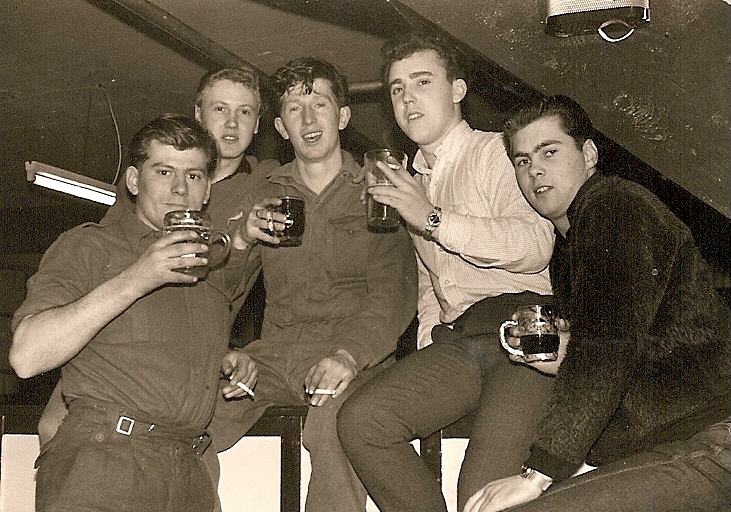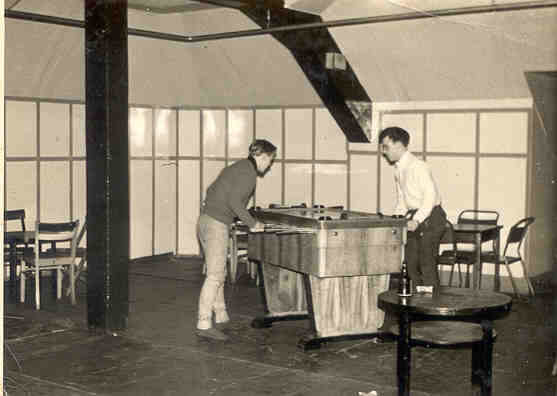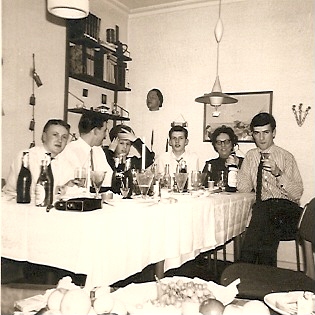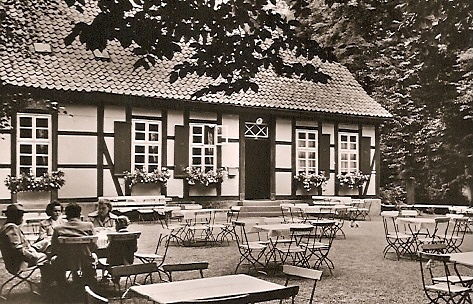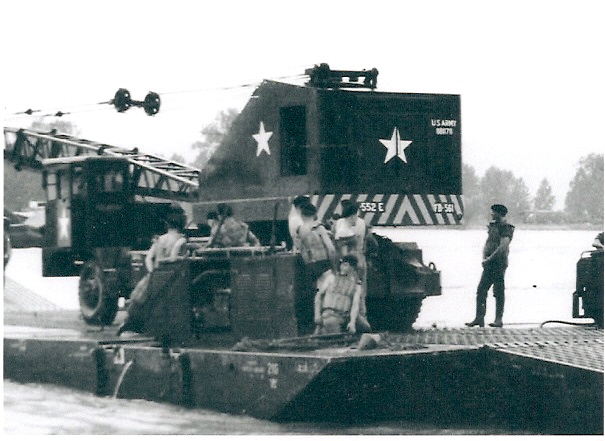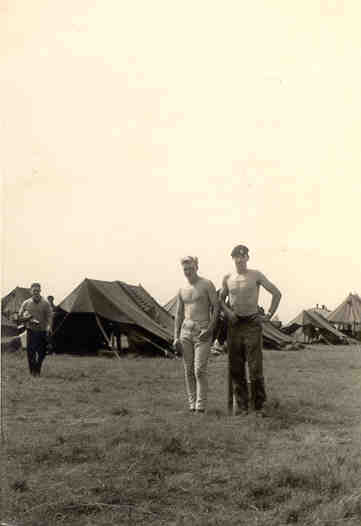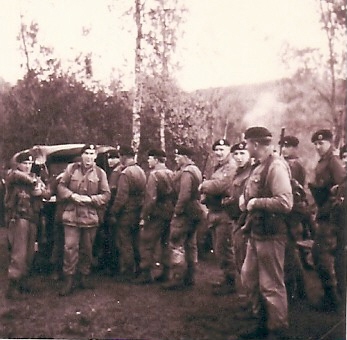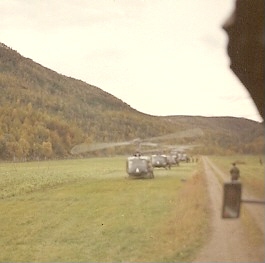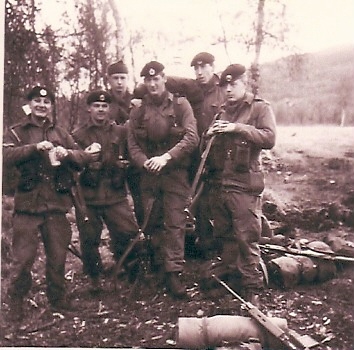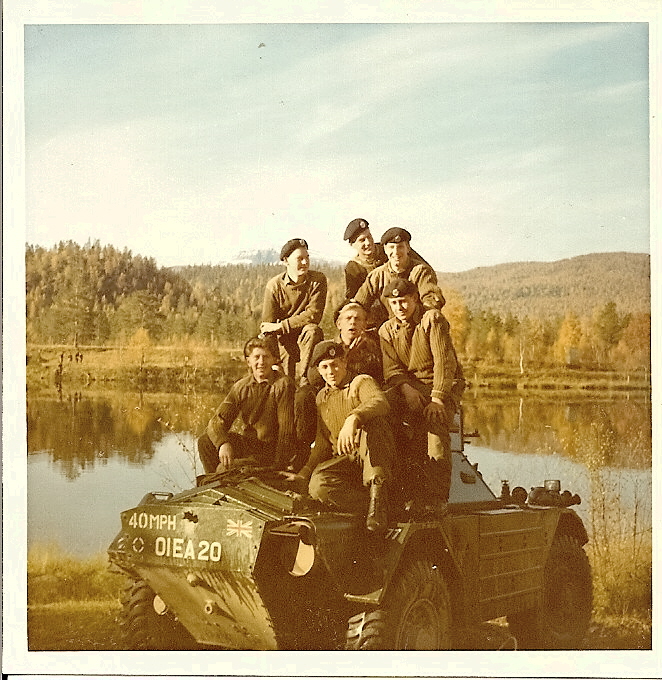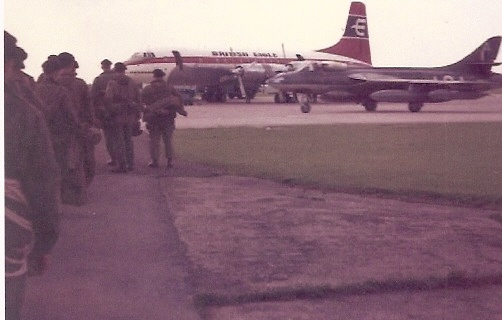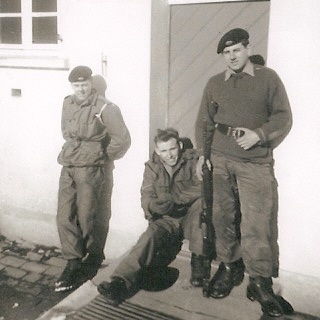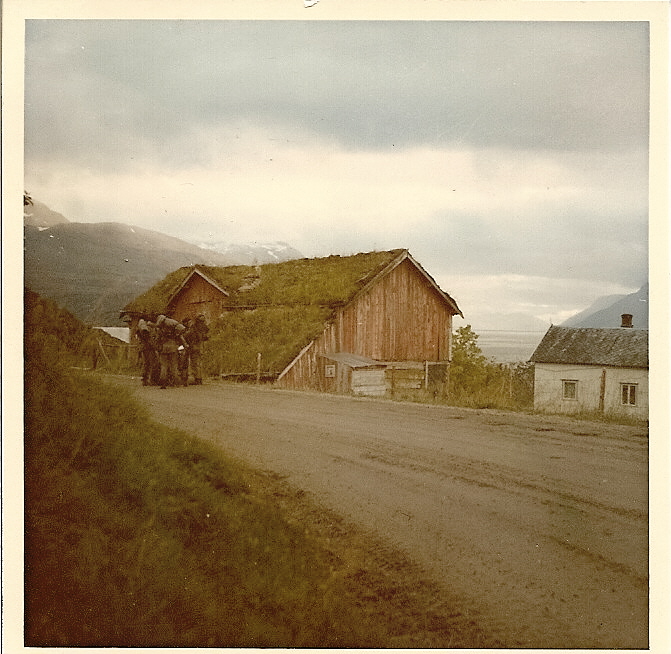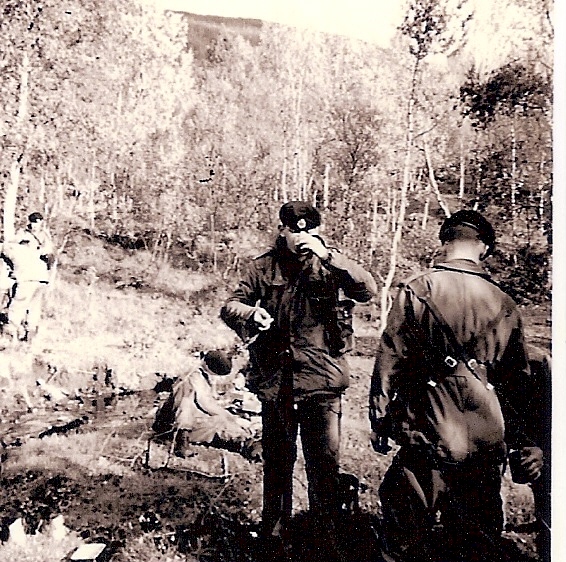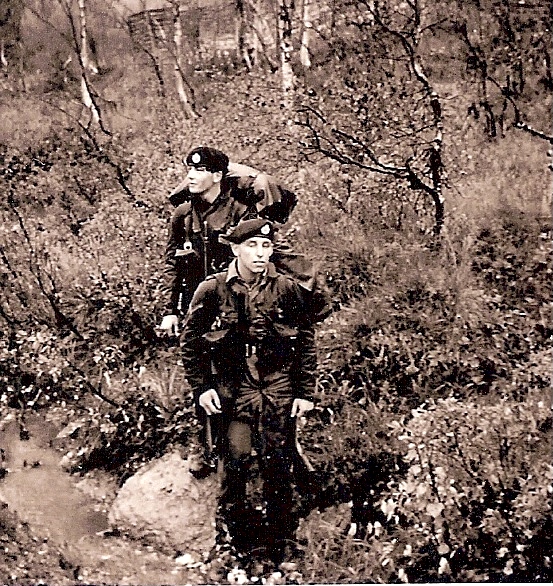Arrival in Germany 6th March 1965
Having completed basic training with 95 training party from September 1964-February 1965, I, with Bob Blakey, Ted Cox, Henry Auckinson and a couple of others, left 1 Training Regiment RE, Southwood Camp, Cove, for Ringway Airport near Manchester, on saturday the 6th March 1965. We flew in a 'prop' aircraft to RAF Gutersloh in Germany the same day. The arrival terminal was a small wooden building. We had to proceed through customs control where I was asked if I had any coffee. At that time, coffee was expensive in Germany, though I'm not sure why. By this time it was about 2000-2100-ish and dark. We boarded a civilian coach, which was at the time, very modern. Enroute to Osnabruck there was nice music being played through the coach speakers. I remember one track, in particular, and that was 'Eight days a week' by The Beatles. Every time I hear that track, I remember that coach journey. It was a bit daunting, my first time in a foreign land, miles away from my family, new in the army and not sure what lay ahead. We were dropped off somewhere in Osnabruck, and then taken in a 3 tonner to Roberts Barracks, which we entered through Times Square Gates at 25 Corps Engr Regt, end of the camp. As we entered the gates, we were stopped briefly for ID checks, and I remember the sentry there asking which Squadron we were going to, on learning we were posted to 7 Squadron, he said " oh that's shiny 7" and commented on what to expect. Over the weekend we were put in a transit room on the ground floor where we looked out of the window and scanned around the regimental square. 7 Squadron block was in the corner so you could see most of the blocks from where we were. Sunday lunch time we went out in No2 dress as we had limited civvies, because of the baggage weight restrictions.First stop was the 'Winkle', which is just outside the barracks. After a couple of beers we strolled down the town. I remember passing motorists gloating at us, what looked like, dissaproval, as they passed by. For me this was very intriguing, I observed with interest, every inch of the way. I was 18 years old, in a foreign land for the first time. In those days travel abroad even within Europe, was not easily affordable as it is now. These days you can fly to Europe as easily as catching a bus. Back in those days many young lads like myself were wooed into the army by it's slogan, 'Join the army and see the world'. Come Monday morning we paraded outside the SSM's office before being marched into the 2 I/C's or the OC's office, don't remember which, anyway, I was originally posted into 3 troop and moved into a 4 man room. My new room mates were, Gordon Dadd, Ron Plaxton and after a couple of weeks, Spud Taylor, when he returned from his B2 sigs course in the UK. Again this was a new phase in my life and I found it a bit daunting. I listened and observed attentively on what my new and experienced colleagues had to say on how life was here, and the advice they gave me. I was grateful to them as they helped me relax and settle in quickly to my new life. At this time I didn't have a lot of civvies with me. I remember I brought with me, The Beatles LP, 'Hard Days Night, It attracted a lot of interest at the time, as The Beatles were in their heyday. The few guys who had record players would blast out 'Beatle' music evenings and weekends. These were days long before music cassettes, videos and CDs came out. Many of the guys rented old radios from a German chap who came around the Squadron block on a friday for his rent money. There were no TVs in the Squadron block as the only stations available were B/W German terrestrial. On the radio we tuned into BFBS, the radio station for the British Armed Forces in Germany.
The Belfry was the name of the squadron bar located in the attic of the squadron block. Every squadron had it's own bar. They were life savers, apart from being a great place to socialise with your mates there wasn't much else to do in those days. I remember my first few evening visits to the Belfry. I would have about 3 bottles of beer, which affected me quite quickly, making me feel relaxed and carefree. Not being used to drinking, I got merry quite quickly. As time went on, I was able to consume more beer before I got to that stage. That was a bit unfortunate as it cost me more as I started to drink more. I had many a good evening in the Belfry, some nights you would have a quiet night having a drink and listening to music played on the Juke box, sometimes a sing song or a function. I remember occasions when Brummy Crawford would lead 2 troop, singing rugby songs, in inter troop, friendly rivalry. That was great entertainment.
The Belfry
Fred Lasham, Ray Rowe,Jock Gilliland, Arthur Waddle & Spanner Spencer RS, enjoy a drink in the Belfry
Alternatives to the Belfry
In addition to Sqn bars there were 2 other bars in the barracks. The NAAFI ran a bar for the regiment named the 'Snake Pit'. It was in the basement of the NAAFI block, which was located more or less centrally in the barracks. It was shared by the 3 Squadrons in 2 Div Engrs; 7 Sqn, 16 Sqn and 43 Fd Pk Sqn. The Snake Pit was not a place I frequented much. It was a no frills bar usually heavy with cigarette smoke, and there were often disturbances in there, giving it a bad reputation. In the other half of the camp was another regiment; 25 Corps Engrs, which consisted of 12 Fd Sqn, 39 Fd Sqn and 65 Fd Pk Sqn. The layout of the camp was the same as that of 2 Div Engrs, with the NAAFI block central containing a bar named 'the Crowbar'. This bar was upstairs in the attic and was quite pleasant and presentable. I would use this bar quite often together with my mates from 7 Sqn. I remember one evening in there we had some fun repeatedly playing 2 songs simultaneously over and over again. They were; nervous breakdown by Rolling stones, and 'they're coming to take me away ha ha, After a few drinks we thought it was funny but some guys showed there disapproval and after awhile, they complained to the barman, but he wasn't interested because we weren't doing anything wrong. I never ever witnessed any trouble in the Crowbar and enjoyed my evenings in there. If you just fancied a cup of tea and a sticky bun you could go the Church Army, which was located in the centre of the camp. You could buy a newspaper, magazine or a new book and have a read while you sipped your tea.
Going out Down Town
If you wanted to go out of camp you were to wear collar and tie and be back in your accommodation for 2300hrs. At about 2300 hrs the duty NCO toured the Sqn block to extinguish all lights and carry out what was called a 'Bed check' This was to make a note of all those who were not in their rooms by this time. A common practice was, if we wanted to go out and likely to be back late, we'd pre-arrange it with the duty
NCO, and usually this was unofficially accepted.
Morning muster parade
Whilst in camp every morning began with reveille at 0600. In between reveille and 0750 we had breakfast and a conservatory parade, which was a cleaning task of the block, which could be the corridors, ablutions, toilets, stairways, outside areas. These tasks were rotated and allocated to rooms. At 0750 we had 'roll call' outside the Sqn block then we marched onto the regimental square by troop. A nominated NCO would be in position on the square, the troop would march and halt with the front rank in line with him. He would then right-dress the troop to line it up perfectly. Then the SSM would report to the Sqn 2i/c who would then order the troop commanders to take their position by their respective troops. The 2i/c or OC would choose a troop to inspect and then instruct the remaining troop commanders to carry out their own inspection of the
men. At a later stage the venue for˜first parade changed to the MT area where we stood in front of our vehicles for inspection.
NAAFI Break.
Every morning whilst in camp the regiment granted us a tea break from 1000-1030hrs. This meant at 0955 the whole regiment descended on the Naafi Block, while the SNCOs would use the Sgt's Mess. The NAAFI did huge sales in various fillings of bread rolls, Naafi pies, fried eggs, sausages, beans, tea, coffee, soft drinks and chocolates. It was another good opportunity to have a chat with pals from different departments and Sqns who you'd see only from
time to time
Ray Rowe and Arthur Waddle on football game in the Belfry
Pay Parade
Yes, we had to parade for every thing!! In those days we would usually be paid fortnightly. Pay parade would entail the pay Sgt, 2 sappers detailed as witnesses, and an officer nominated to be the paying officer. The pay Sgt and the paying officer would sit at the table while the 2 witnesses would stand behind, one either side of them. We would collect our pay books prior to being paid, which would have the amount to be paid entered on the appropriate line. This book was a record of what you had been paid, and when. In the rear section was a record of the amount you were entitled too and the deductions. The procedure was to march up to the desk, halt, salute and hand your pay book to the paying officer. The pay sgt had a big spread sheet in front of him and he would from that, tell the paying officer how much to pay you. The officer would sign the book and hand it back to you with your pay. You were then to count it, which didn’t take long as it was never very much. If you agreed with the amount, you would answer ‘Pay and pay book correct sir’, salute, right turn and march off. A few days later you would be skint. We were never paid loose change, any parts of a pound were held in what we knew as ’credits’. Before we went on leave, we would fill in a form to get what we had in our credits, which helped top up our leave pay. When I think about the number of man hours lost for pay parades. It is just amazing. The army introduced bank payments to all soldiers in the early 1970s.
Drill Parades
From time to time we would have to do Sqn drill parades just to ensure we didn’t forget how to march together uniformly. Saturday mornings was usually when we did this. In those days we had to work Saturday mornings until 1200hrs, at which time, the fire siren practice would sound over the barracks. This was a welcome sound.
Exercise Quick Train
A good deal of the time we were on standby for exercise ‘Quick Train‘. (Later known as Active Edge) This was quick reaction training we did in response to a possible Soviet invasion. The regiment would be put on various states of alert. When we were on high state of readiness we’d have our kit packed as much as possible. On the event of Quick Train being called, the whole regiment; troops with all their kit, equipment and all stores had to be moved out to a given location, ready for war. The call could come at any time, usually in the early hours. This meant the sqn and regimental duty drivers would have to go the married quarter areas and bring in the married pads. The location we usually went to was our local training ground at Achmer, an old German airfield. Sometimes we’d have a ‘Quick Train’ call out immediately preceding a planned Exercise.
Signals Course
I did a B3 Signals course in about April-May time, which was held within the regiment. The radios we commonly used were the C42, C13 and the portable A41. The course concluded with a short exercise near Celle, which gave us the opportunity to visit Bergen-Belsen. I passed the course and was posted into HQ troop to drive the Squadron CV.
CPXs & TEWTs
After my signals course I did a couple of short exercises as the OC’s driver on CPXs and TEWTS. TEWTS were command and control exercises for officers and were without troops.
Sport
When I arrived in the squadron I was asked what sports I did if any. I said cross country running and was soon training with the sqn team. In the mornings we’d go out on a run together in the local woods. I can only remember 1 name of the team at that time, and that was Tony Rountree. I can’t recall any inter unit competitions that year, but I did run as part of the regimental team against a local German team.
Squadron Minibus
This was a Morris minibus donated to the squadron by the Nuffield trust, which was used for recreational purposes.
Trip to Amsterdam
One day Brummy Crawford came round the rooms taking names of those interested in a trip to Amsterdam on the forthcoming bank holiday. He was organising a trip using the squadron minibus. It sounded great to me, a chance to see another country, another city. In those days foreign travel to most people was a rarity and I was excited with this opportunity. On the journey to Amsterdam I enjoyed the scenery and was amazed with the long, straight, flat stretches of road. We arrived in the evening and booked into a small friendly hotel named 'Uw Hotel'. We then drove around in the minibus to view the sights around the canals. It was a good laugh driving around the narrow canal streets looking at what was on offer in the street windows!! There were some funny comments from the lads as we viewed the ‘window dressings’ Later we walked around in small groups of twos and threes and did our own thing. We all enjoyed ourselves, and the trip was a great all round experience. For me, it was the first of several trips to Amsterdam. Later that year, Stuart (Jock) Clees and I, hitch hiked in uniform to Amsterdam. That was a great experience, people we met enroute were very friendly and helpful.
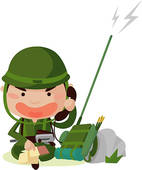
Ranges
Every year we all had to pass our annual personal weapons test. The Sqn would go to the ranges for a few days at a time to fire their personal weapons. We had to score a certain amount of hits to pass the test. The weapons we had in those days were the Belgian FN 7.62 SLR, the SMG 9mm, the LMG 7.62 and the Browning pistol 9mm. We would have to qualify with at least one of those weapons.
Queen Elizabeth and Prince Philip visit Germany May 1965
For the Queen’s first ever visit to Germany a review of the troops was on the programme. 6000 troops from units in BAOR took part, 2 Div Engrs, made up of 7 and 16 Fd Sqns and 43 Fd Pk Sqn RE were detailed to participate on the parade. We practiced for about 1 week, travelling each day to Sennelager by civilian coach to rehearse on the actual site. The parade was in the form of a massive square shape. On the actual day of the parade, we did a ‘Royal Salute, Present Arms, the Queen and prince Philip were driven past standing in an open top landrover. I remember getting a good look at the queen’s face. For the German people this was a big occasion, a visit by the British Queen, a rare and exciting moment indeed! I remember reading an article in the British press about the visit, and a photo of the German welcoming crowd holding banners, saying, ‘Herzlich Willkommen Konigin Elizabeth, und Wo Sind Die Beatles’. This was all happening in the ‘Beatle mania’ era, a fantastic and unique time!
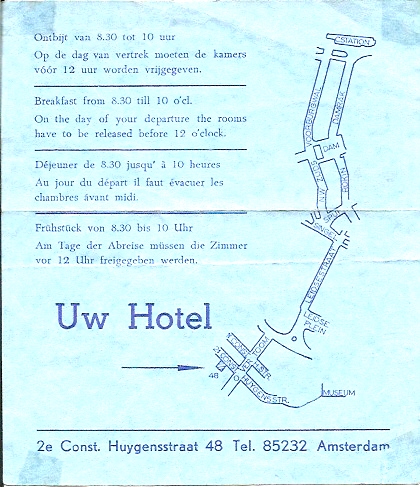
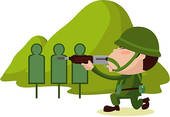

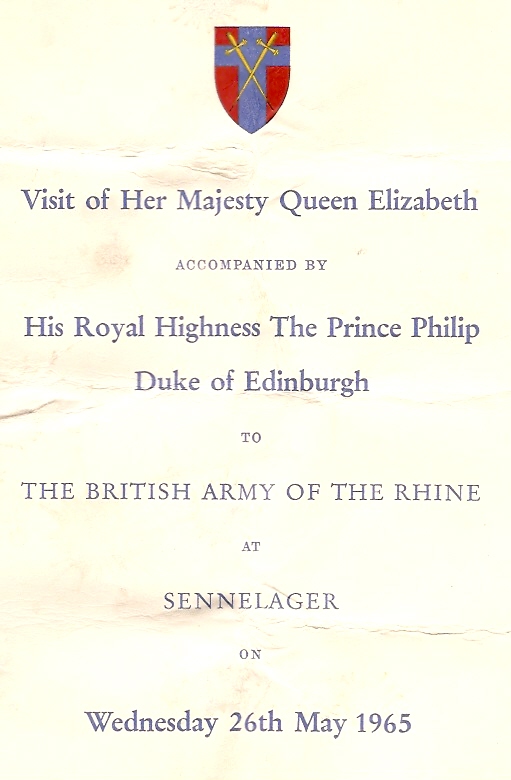
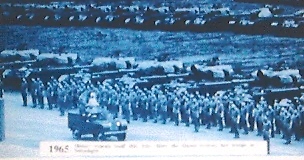

Exercise Channel Link 1965
This was my first large scheme in early summer of 1965. This exercise was mainly in the form of ‘Route Denial’. The Sqn laid thousands of MK 7 mines, as well many bridge demolitions. I remember the Belgian army being ferried across the river on Gillois amphibious craft. The EKW-Gillois was a French amphibious bridge that preceded the M2 ferry adopted for BAOR. The Belgians were still using APCs from the war. At this time we had not been issued with our FV432 armoured track vehicles. On this exercise I drove the Sqn CV, which was a Humber 1 ton armoured wheeled vehicle, commonly known as a ‘Pig‘. It was a nice vehicle to drive and I enjoyed driving it. The Squadron CV was the communications vehicle which was in radio contact with the Sqn, Regt and upper Echelons, which meant we had usually 3 radios in operation at all times. On exercise, when we arrived at our harbour area, the first thing we did was to scrim up and erect a 27' mast for communications. I had to do radio stags, usually in the quieter period. The poor old Sqn 2i/c spent hours on duty in the back of the CV. Exercises usually meant little or no sleep, and sometimes it was a struggle getting up to do your stag or a ‘stand to’, however, this was a learning curve for me and I found it very interesting and enjoyable.
Trip to the UK
Immediately after Ex Channel Link I went to the UK for a week's leave in the squadron minibus. There was a trip organised and I put my name down to go. The overland journey in the minibus to London then the train journey home seemed to take it out of me, as I just slept and slept for most of my stay at home. Nevertheless it was good to see my family for the first time since being stationed in Germany.
Bridge Camp
Just prior to my first bridge camp, the sqn was unexpectedly called out in the early hours of the morning to assist with rescuing civilians from some flooded area. I don’t remember the exact location but I particular remember driving in the convoy enroute in heavy rain. We stopped briefly, and I saw Danny Nielsen, who was driving a ferret, wearing only overalls, he was absolutely wringing wet and cold. I felt sorry for him. Some of the squadron was involved in assisting civilians and rescuing some pigs on a farm. The British press covered the story in the Sunday newspapers.
Every year as most Squadrons did, we would go to Hameln for a 2 week bridge camp, for bridging exercises on the river Weser. This training was mainly building Heavy Assault Floating Bridge (HAFB) and building Heavy Ferrys, including night builds. Bridge Camp was a tented camp on a hill looking down on the very outskirts of the town. The only permanent buildings were the kitchens, stores, toilets and showers. There were permanent concrete bases for the canvas tentage. Most of the camp was canvas including the dining halls and Naafi beer tent. Sometimes there would be more than 1 unit there at the same time. On my first bridge camp in 1965 we were there with the Canadians and Americans. Our accommodation was 160 pounder tents. On bridge camps we worked hard and there was not a great deal of spare time, any spare time gave you a chance to do your washing. Most of the guys would have a drink in the Naafi beer marquee. If we had a day off some guys would go down town for a drink. We got on very well with our Canadian and American colleagues, especially the Canadians. A group of us went out with some of the Canadian radio operators to a local pub nearby, which we knew as ‘2 fields and a ditch‘. The German name is ‘Forsthaus’ (Forest House) It was located in a wood on the west side of the camp. We had an enjoyable social drink together. It was a favourite drinking place with many of the lads in the Sqn. In the Naafi beer marquee itself, I remember being in the queue waiting to be served. The barman, a German with dark hair and thick black rimmed glasses, was serving this guy with a beer. There were no more clean glasses, so he took 1 of several half empty glasses of beer, which sat on the bar, and without emptying it first, he dipped the class in a sink of water and brought it straight out and started to pour beer into it. The guys who saw it gasped with amazement. One evening after a few beers in the Naafi, a couple of the guys decided it would be fun to slide down the roof of the marquee. You could see from inside the impression sliding down. It caused a laugh and an occasional cheer. It looked fun and I decided to spend some energy doing the same. I climbed up to the top and slid down a couple of times. My fun ended when I slid off the end and onto something sharp and I cut my heel quite bad. I was wearing sandals at the time. I had to go down to Gordon barracks medical centre and get a Tetanus jab. Two pretty young German nurses attended to my wound. I was excused boots for a few days and ended up working in the cook house, peeling spuds and pan scrubbing. Idiot!!!
Exercise at Worms near Darmstadt
Some time in the summer the squadron drove down to Worms south of Darmstadt in the American zone for a bridging exercise on the river Rhine. This was the first time I had driven on the German autobahn. Prior to going onto the autobahn, the new drivers like myself, were warned to be careful of the fast traffic. I drove a 'Pig' in the convoy. We were there for about 10 days, the weather and the scenery was nice down there

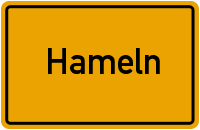
Border Patrols & Site Guards
From time to time the Sqn carried out its turn to patrol a stretch of the inner German border. This was at troop strength and involved driving along the border in Ferret Scout Cars and Landrovers observing the guards in the Eastern side. We were accompanied by a member of the British Frontier Service. This was a job that we had to do not too often; nevertheless, it was a task we had to do in those days.
Periodically we were called upon to do guard duties at an American nuclear weapons site near Munster. The Americans administered the site but the ‘Brits’ guarded it. We would go for about a week at a time. Obviously this was a very sensitive area and was protected accordingly. This was a boring task for all the lads.
Lead up to Exercise Bar Frost
Prior to the autumn major exercise, ‘Bar Frost‘. The OC was aware that the lads needed to have a high standard of fitness to cope with the tough and mountainous terrain in Norway. Some weeks prior the exercise, the squadron went out on morning runs into the wooded and quarry area nearby. We would arrive at the foot of a big steep quarry heap and told to clamber to the top. Of course there were 1or 2 of us who would race to the top.
I was always first to the top and I was chuffed with myself. At this time I was one of the younger members of the squadron and I was still learning from the more experienced lads, whom I had a lot of respect for. Being first to reach the top of the quarry heap, gave me confidence and great satisfaction. For me these runs were enjoyable, however not all the lads shared my enthusiasm for this.
Exercise Bar Frost Norway Sep 1965
This was a major NATO exercise in north Norway. At the time we were part of 12 Inf Bdge, who took part. We flew from Gutersloh in specially chartered flights with British Caledonian Airways to Bardufoss, which is 160 miles north of the Artic Circle. The Sqn carried out mainly an infantry role, which involved stomping over the wooded and rugged terrain. I’m not sure how many nationalities were on this exercise, though I know the Norwegians and the Americans took part. The exercise also included an assault landing on the Norwegian coast by US Marines.
On this exercise I was the OC’s radio op. I carried an A41 radio pack on my back, which always included a spare battery, which was quite bulky.. Early on in the Exercise we stomped over rough terrain and waded waist deep across a river. By the end of the day we were well knackered. HQ troop at least, never had a meal that day and I remember one of the lads produced a tin of compo 'orange ade' powder, and we ate it as we were so hungry. Late in the evening we came across a hay barn, with a ramp leading up to the door. We entered the barn and crashed out in the hay. By this time we were very tired, wet and hungry. I collapsed just through the door, took my boots off, stuffed them with hay to help dry them out, and buried myself in the loose hay. About half an hour later, a couple of the Sqn’s recce ferret crews came to join us. I was lying just through the door and in the path of anybody who entered, but I was too tired to move so I called out to them as they came through the door to go immediate left or right or you’ll stumble over me. Of course it was pitch dark and they couldn’t see anything. Early next morning we were back out stomping over the hills. There was one morning we arrived at a hamlet and some very kind Norwegian lady invited us into her house for coffee and some breakfast, that was most welcome. I remember one day of the exercise we were sat on a hill looking down onto a road where our lads were taking Norwegian army prisoners. While this was going on, I was briefly reflecting on events exactly a year ago to the day. It was the day I walked into Southwood Camp, Cove, 15 September 1964 to report for my army training. I thought if all exercises are as tough as this, then I am in for some hard times ahead. As it happened, I never experienced anything as tough as that exercise again. I don’t know why we went without meals so often. I think somebody screwed up somewhere. There was another day on this same exercise where we were to RV with some 3 tonners and get driven to a certain location. We arrived at the RV, again very tired, hungry and wet. We climbed onto the back of theses 3 tonners, which were packed with guys. I was one of the last to clamber into the back, helped by a colleague, Wingy Thompson, who took my radio off me. Once I had scrambled into the lorry he was saying how he was looking forward to being back at home drinking hot tea and home cooking. I had been thinking exactly the same for days; I was imaging being sat by the fire eating my mam’s food, luxury!! Anyway, the 3 tonner was loaded and proceeded to pull off. It went about 2 yards when the soft verge gave way and the vehicle slid into the ditch at a 45 degree angle. We all had to de-bus, so much for the lift. We were all thoroughly peed off with that. At one stage there was an airlift in Norwegian helicopters and I remember the nice view we had of the terrain and mountains. When the exercise finished we stayed under canvas at Bardufoss. I think we probably had about a week before we returned to Germany, during which, there was an organised trip to Tromso, the nearest biggest town about 30 miles away. Being on exercise we had no civvies with us so we had to go in clean combat kit. There was to be a parade prior to departure to ensure that everybody had clean combat kit before being let loose in Tromso. Days before, we washed our combat kit in the river; this was the old combat kit before the DPM version came out in the early 70s. I used compo soap and scrubbed with a flat stone. It turned out clean and luckily it didn’t rain so it dried ok. On the, pre-Tromso trip, inspection parade, most of us failed miserably. The OC inspected us and his expectations were very high. Not many of the lads went to Tromso. Another day I remember going to a cafe with some pals and drank a few cups of black coffee over a long chat, as there was not much else to do. One day I did go for a long walk, taking in and enjoying the beautiful autumn scenery of gold, yellow, red, brown and green coloured trees surrounding the lake. There was an evening I can recall, when I went to a local bar; I think it may have been at the airfield base. Many of the Squadron were in there, and we had a decent night on the weak beer. Although the exercise was hard and tiring, it was a great experience and I enjoyed the free time afterwards.
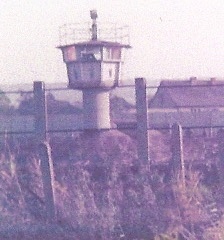
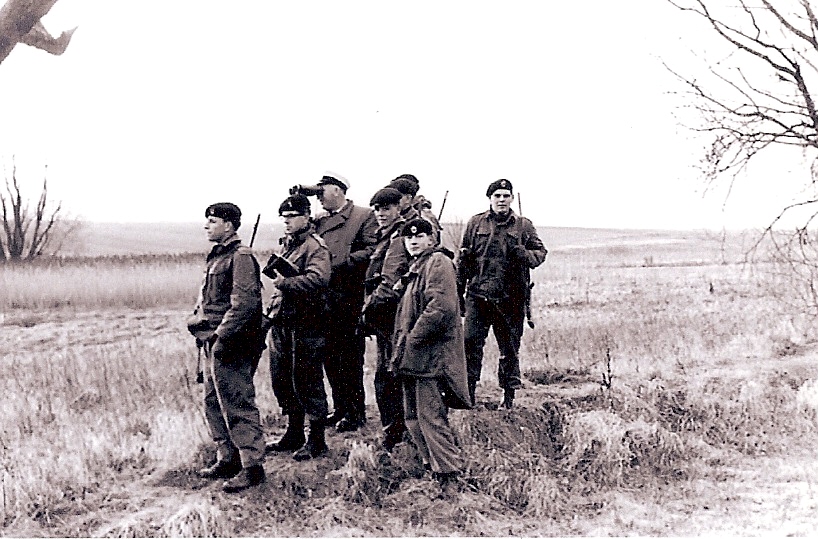
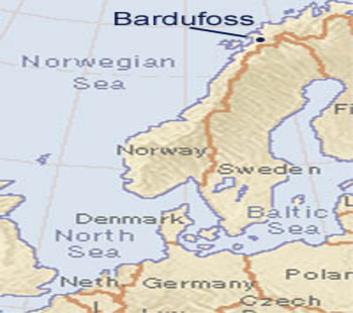
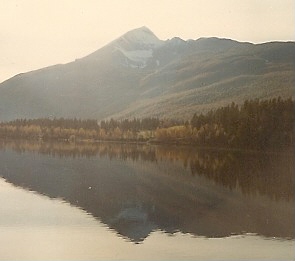
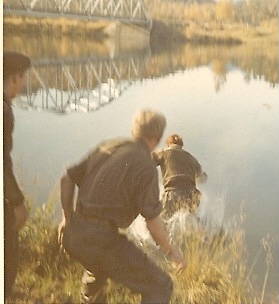
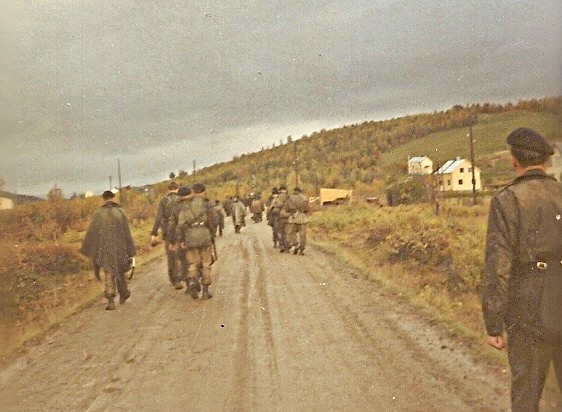
Leave
Soon after we returned from Norway I went to UK on 3 weeks leave. I don’t remember too much about this leave, though I remember a pint of Federation beer cost 1/9d, and I remember getting a severe hangover with Newcastle Exhibition draught. What a strong beer that is.
The Squadron football team
It was about November time, I had to take the squadron football team in a 3 tonner for an inter unit competition. I don’t remember where it was or who it was with, but I will never forget the score line; an embarrassing 15 nil to them! Sssh!! To be fair, I do believe it was a make-shift team as some of the regular team were missing. I was asked not to disclose the score!
Xmas Break 1965
I was keen to go and see another country, and Xmas leave seemed a good opportunity to go and visit Denmark, so I arranged to go with a couple of pals. We organised travel warrants and traveled by train to Copenhagen. Part of the journey includes a ferry crossing from Puttgarten Germany to Rodby Denmark. Once in Copenhagen, we booked into the 'Det Nye Turist Hotel' and met some Canadian soldiers who were also staying in the same hotel. Later we went around the town for some sight seeing and I remember it started to snow. One day or evening we met a Danish guy called Lars Pedersen, who invited us to his house for dinner on Boxing Day. In 1965 the Danes and Dutch still had the war clearly etched in their memories and were very pro British, and it was easy to make acquaintances with them. On the Boxing Day we went to his house for dinner. It was an experience I will never forget. We were just taken aback by the hospitality and this marathon dinner laid on for us. I don’t remember how many courses there were but we were sat at the table dining for more than 2 hours. There were all kinds of dishes. There were several times, we thought we had finished, and then in would come another course and more wine, beer and aquavit. We told our hosts that we never had marathon dinners like this in the UK and they replied, ‘the English eat to live, but the Danish live to eat‘. Our hosts were very hospitable and we thoroughly enjoyed the evening. I stayed in contact with the family for a while, sending them postcards. On the return train journey in Germany, the ticket inspector checked our tickets and said we had to pay a supplement because we were on an express train. We were surprised by this as we never experienced this before. It was only 3 marks each but we were skint and couldn’t pay, thereupon, we were told to get off at the next station and get another train. We didn’t want to do that because we were tired and just wanted to get back, besides it was cold, dark and late.. At the next station we stayed on the train and the inspector came around again and told us we must get off at the next station. Again we stayed on the train and the same thing happened again. At the next station I got off and met the ticket inspector on the platform and asked if we could pay the supplement at Osnabruck station. He must have thought we were lying when we told him we had no money as he said ‘its ok never mind‘. We were very relieved at this and from then on, whenever I traveled by train, I always made sure I had money to pay for express supplements.
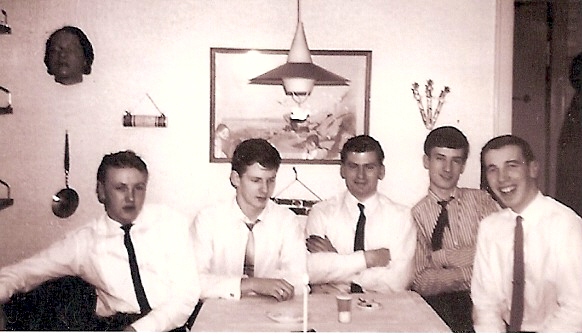
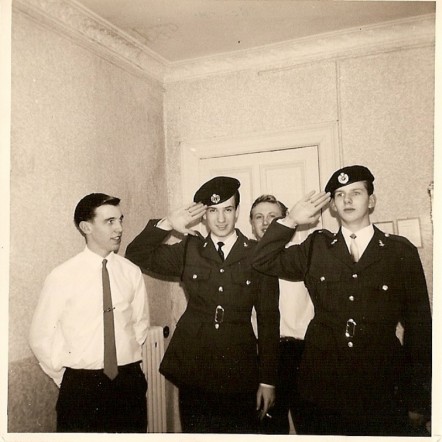
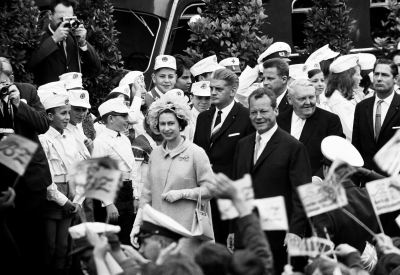
Hotel We stayed in on my first trip to Amsterdam
Front Cover of visit Programme for the above
HRH and the Duke of Edinburgh State Visit to Berlin
together with Chanceller Willy Brandt 28 May1965
Her Majesty Queen Elizabeth and Prince Philip Review Britsh Soldiers at Sennelager 25 May 1965
Taff Lewis, Merv Davies and Brummie Crawford on break whilst practising for the Queen's visit May 1965
Humber 1 Ton Armoured vehicle, affectionately known as a Pig. This was my first vehicle when I joined the Sqn.(59BK95) I liked it. I thought it was great.
Bridge Camp. The tented camp site at Hameln.
East German Lookout Post on the Inner German Border
2 Troop on Border Patrol
Mount Istind Bardufoss Norway
Chris Ellis assists Ginge Oreilly into the drink. Bardufoss September 1965
We did lots of Stomping over hills, rivers and bogs
A very wet Dave Biram & Paddy Ogilvy Ex 'Bar Frost' Norway September 1965
Boxing Day 1965 Ray, Fred and me with our Danish friends
This was taken in our Hotel Room December 1965
Marathon Dinner with with our Danish Hosts
2 Fields & a Ditch Guest House
The Squadron Tented Camp Worms, Darmstadt
Ray and me Worms 1965
Photo; Graham. 1 Tp on the Rhine near Darmstadt
The Squadron embarking for Bardufoss at RAF Gutersloh September 1965
Picture taken in Norway prior or after the exercise
Bardufoss, Norway. Located 200 miles North of the Artic Circle and 30km from Tromso
Memory from Andy: The end of exercise in Bardufoss when everybody, in the tented camp, got the runs and S/sgt Woods didn't make it to the loos, stood legs akimbo and did it in his PJ's, the same exercise when on our return to camp, all the liquor had been sold to the Norwegians so cigarettes were bought, packs of 200, and sold to the Norwegians, with my stash I thought it would be a good idea to get a fresh Reindeer skin, salt it, wrap it up and on our return to Osnabruck, still wrapped, took it to a large store to the fur dep't, opened it to ask if they would cure it etc. and nearly emptied the store with the stink.
Dave Pomphrey: Can anyone remember whilst on Ex Barfrost one of the cpl's, Keith Welford [think] in a barn nearly died of exposure from being wet & cold. I had to hand feed him with hot mutton & peas that was enough to kill anyone. Nice to hear from you all
Air lift Ex Bar Frost
Dinghy, Paddy, Jim
My Leave Pass for this Trip
My Memories 1965
Click on the links for my memories of 1966
1967
1968-69
